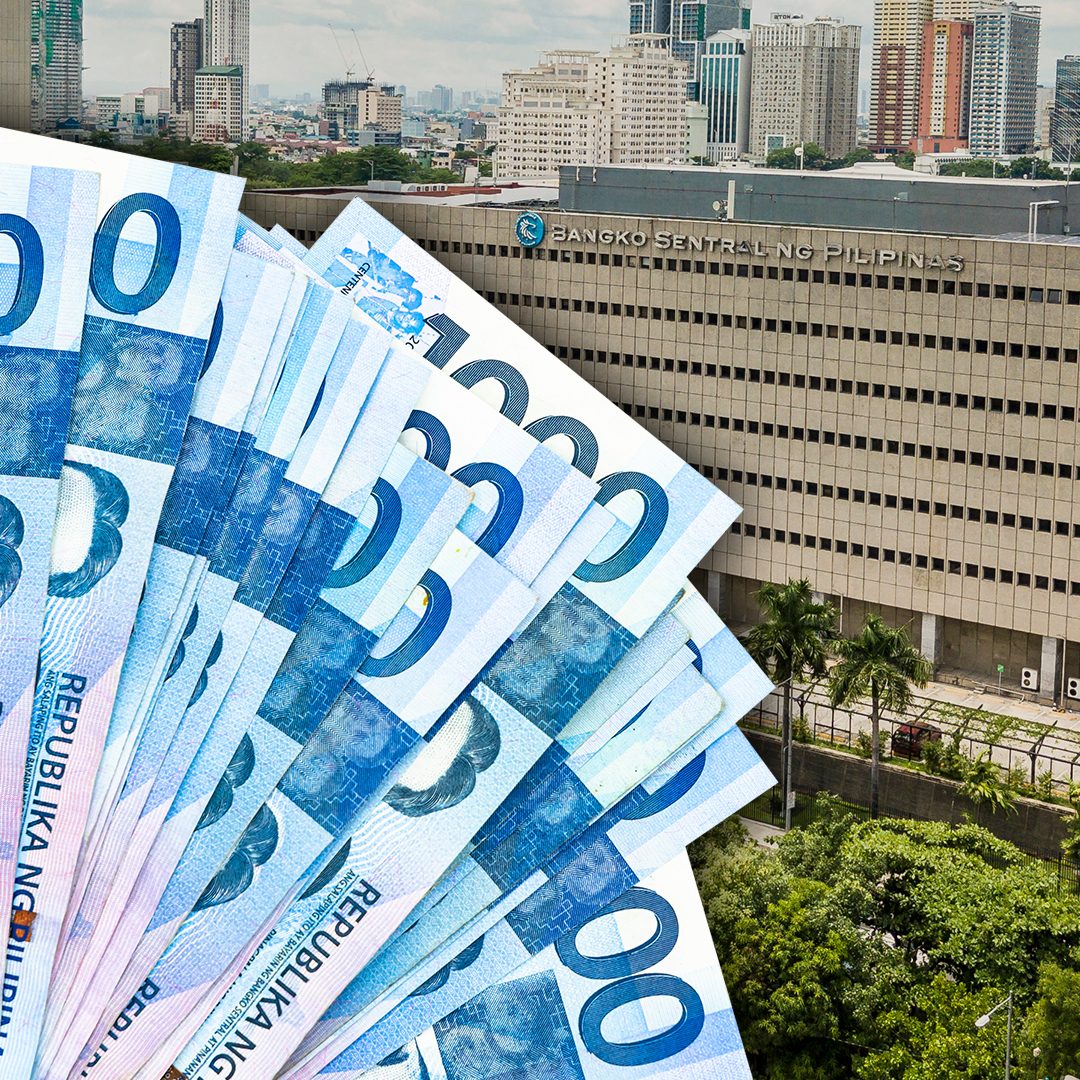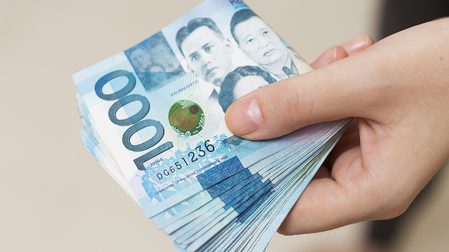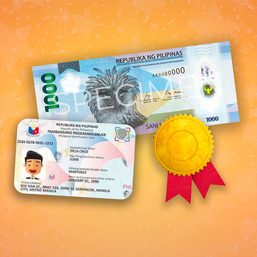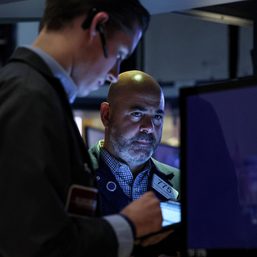SUMMARY
This is AI generated summarization, which may have errors. For context, always refer to the full article.

AT A GLANCE:
- The central bank is testing the use of polymer for the P1,000 bill, a banknote rarely held by ordinary Filipinos.
- The polymer banknotes will be printed via a government-to-government agreement with Australia. This has not been made transparent to the public.
- Polymer banknotes are more expensive to make. P1,000 paper bills are also the most expensive among current banknotes, due to more sophisticated security features. Add the two together and you will have the most expensive banknote the Philippines has produced yet.
- Abaca farmers say the proposal threatens their livelihood.
The move of the Bangko Sentral ng Pilipinas (BSP) to study a possible shift from paper banknotes to polymer has alarmed former and current central bank officers and industry stakeholders.
They all ask: Why do it now amid the coronavirus pandemic, when the BSP is urging people to do away with cash and embrace the digital push?
In a briefing in October, BSP Deputy Governor Mamerto Tangonan raised two points in favor of polymer banknotes. One, the plastic banknotes are more “hygienic” as they can be disinfected. After all, cleaning surfaces of virtually almost anything has become the new normal. Two, polymer banknotes, while they are plastic, are supposed to be more environment-friendly, as they are more durable.
The abaca industry was quick to debunk Tangonan’s claims, saying that abaca is one of the country’s banner crops, and shifting away from it would endanger farmers’ livelihoods. At present, Philippine banknotes are made of 80% cotton and 20% abaca.
Tangonan, the BSP’s newest deputy governor and head of the newly established Payments and Currency Management Sector, assured farmers that the limited polymer banknote circulation would only affect around 0.4% of jobs in the abaca sector, or at most 481 people.
He also added that the BSP would be printing just “a few hundred million pieces of banknotes” for the test.
How many, exactly? And, most importantly, who will print these banknotes?
MOU with Australia
Two reliable sources in the BSP confirmed to Rappler that the central bank has entered into a memorandum of understanding (MOU) with the Reserve Bank of Australia (RBA) for the supply and printing of polymer banknotes.
Sources also told Rappler that an RBA subsidiary, Note Printing Australia (NPA), will be the one printing the polymer banknotes.
NPA has produced and supplied polymer banknotes for Papua New Guinea, Brunei, Thailand, New Zealand, Indonesia, Malaysia, and Singapore.
NPA sources polymer substrate from CCL Secure, a wholly owned company of Canada’s CCL Industries.
Sources also said the MOU indicated a government-to-government (G2G) deal.
In a text message, BSP Governor Benjamin Diokno confirmed the MOU, adding that it had been signed.
Rappler asked for a copy of the MOU, but Diokno said: “It’s G2G. It is confidential since it involves sensitive matters.”
Former and current central bank officials have questioned the MOU, as the arrangement supposedly did not pass through pre-qualification and bidding.
Traditionally, deals like these undergo the scrutiny of various BSP committees and divisions.
First, a committee which handles currency management and a committee on numismatics, the study of currency units, invite all printers of banknotes and tells them about the requirements, including the material and security features.
The committees then hold “a competition” for these printers and vote on which companies would make the cut.
After the voting, the committees step back, as the bids and awards committee and procurement offices take over to determine the ability of the firms to satisfy the BSP’s requirements. It is also these committees that check if the companies have the financial capability to undertake the project.
Rappler asked a central bank insider and two former employees regarding the G2G deal for the polymer banknotes. The agreement did not sit well with them.
“That should have been a competition [among companies]. The Philippines is not a small country, as far as market for banknotes is concerned. We have 110 million people,” a former official said.
Another source questioned the choice of the BSP to test polymer for P1,000 bills.
“Hindi naman nakikita ng ordinaryong tao itong P1,000 (Ordinary Filipinos rarely get hold of a P1,000 bill). If they really wanted to test that, dapat (they should’ve gone for) lower denominations,” another source said.
“May kikita kaya sa deal na ‘yan (Will somebody pocket money from that deal)? I certainly hope not. But the higher the denomination, the higher the production cost because there are more security features.”
Security features
Printing money isn’t the most tedious part – it’s the introduction of security features. This is also the most expensive part of the production cost when it comes to banknotes.
The latest New Generation Currency banknotes have the most sophisticated security features the Philippines has ever seen to date.
Some of the features include embossed prints, serial numbers, security fibers, watermarks, and security threads.
For the P500 and P1,000 banknotes, there are more security features, like the optically variable device (OVD) patch and optically variable ink (OVI).
The OVD patch is a reflective foil, bearing the image of the blue-naped parrot for the P500 bill and a clam with South Sea pearl for the P1,000 note. It changes color from red to green when the note is rotated 90 degrees.
Meanwhile, the OVI, found only in the P1,000 note, is an embossed denominational value at the lower right corner of the face of the note that changes color from green to blue when viewed at different angles.
“The P1,000 bill is the most expensive to make. Polymer banknotes, I believe, are also more expensive. Combine them together and these are the most expensive banknotes we will ever produce, granted that the central bank will retain the level of security for the P1,000 bills,” an insider said.
The BSP earlier said the shift to polymer would aid in the fight against fake money.
In the same breath, the BSP said the Philippines “does not have a major counterfeiting problem.”
Crime syndicates, however, may “keep improving their techniques in counterfeiting the New Generation Currency banknotes that are in circulation.”
Not the first time
The BSP has considered polymer banknotes in the past, but it found that Filipinos were not very receptive to the plan.
For one, the material warps when subjected to heat. In a warm and humid country, this will be a problem.
Jeepney drivers also complained of the material not retaining its original form after being crumpled.
As the shift to polymer looms, two top executives from the country’s largest commercial banks are awaiting the BSP to contact them for the rollout.
“We need to check if the polymer banknotes will be accepted by our ATMs (automated teller machines). I assume that it will be accepted, but we have to test them out,” a chief executive officer of a bank said.
The BSP aims to test the banknotes within the first half of 2022.
Rappler sent an email to the central bank for additional details of the deal. We will update this story once we receive a reply. – Rappler.com
Add a comment
How does this make you feel?






There are no comments yet. Add your comment to start the conversation.